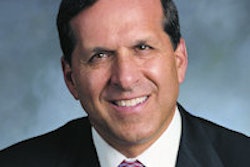
A higher acceptance rate doesn't mean higher production
Since the dental economy has become more challenging, a number of dentists have been perplexed to see that, despite a high acceptance rate, their production remains too low. If they look at these two numbers with a diagnostician's eye, they'll realize that there's a problem with what they're presenting. If most of your recommendations to patients are for single-tooth, need-based treatment, you too may be experiencing similar disappointment in your production and income.

Present more multitooth and elective treatment. We all know that production per new patient tends to be higher than for established patients, because they need more dental work. However, even patients you've served for years may be interested in cosmetic and other elective procedures. Emerging technologies, new reasons to be more attractive, financial success -- all can result in new treatment possibilities, if you present them.

Don't track just total acceptance. Clearly, if you want an accurate picture of how well you're handling case presentation, you need to review a set of numbers -- not just a single acceptance rate -- every month. First, track what proportion of total cases presented are larger or elective. A reasonable target is 40%. Then track acceptance of those cases and of other cases separately. Finally, track total acceptance -- which should be 90%. This more accurate approach will give you more control and also higher production.
Roger P. Levin, DDS, is the founder and CEO of Levin Group, the leading dental practice consulting firm in North America. For the complete list of dates and locations where you can attend his latest seminar, visit www.levingroup.com/gpseminars.
The comments and observations expressed herein do not necessarily reflect the opinions of DrBicuspid.com, nor should they be construed as an endorsement or admonishment of any particular idea, vendor, or organization.



















